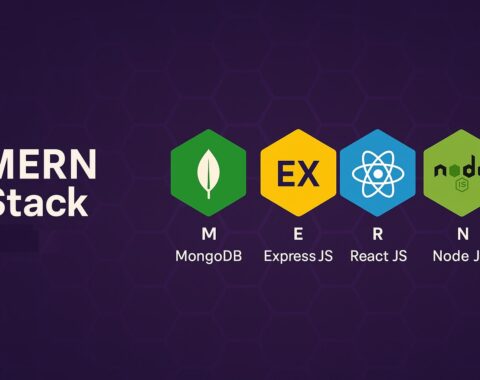In today’s fast-paced digital world, a website serves as the backbone of any business. A well-structured, user-friendly, and optimized website not only enhances online visibility but also strengthens brand credibility. At Appbirds Technologies, we follow a systematic web development process to create high-performing websites that drive engagement and conversions.
Why Does Web Development Matters?
A website is not just an online presence; it is a powerful business tool that helps establish credibility, attract customers, and drive revenue. Whether you are launching a startup, an eCommerce store, or a corporate website, having a robust and well-optimized website can make a significant difference.
Some key benefits of an effective website include:
- Enhanced Online Visibility: A well-developed website ranks higher on search engines, bringing in organic traffic.
- Improved User Experience: A fast-loading, mobile-friendly website ensures better engagement and reduces bounce rates.
- Better Conversion Rates: An intuitive design and seamless navigation increase customer trust and lead to more conversions.
- Scalability: A well-coded website can easily be expanded as your business grows.
Step-by-Step Web Development Process
Building a website involves several crucial steps to ensure success. Let’s break down the process:
1. Planning and Research
Before diving into development, it is crucial to define your business goals, target audience, and website objectives. A well-planned approach helps in designing a website that aligns with your business needs.
Key elements in this stage:
- Competitor Analysis: Understanding what your competitors are doing helps in identifying key features to include in your website.
- Target Audience Research: Knowing your audience’s preferences helps in designing a user-friendly interface.
- Project Scope & Goals: Defining the purpose of the website, such as lead generation, eCommerce sales, or brand awareness.
- Sitemap & Wireframing: Creating a blueprint that outlines the structure and functionality of the website.
2. UI/UX Design
A visually appealing and user-friendly interface is essential for keeping visitors engaged. User Interface (UI) and User Experience (UX) design play a crucial role in determining how users interact with your website.
This phase includes:
- Wireframing & Prototyping: Creating basic layouts to define the structure.
- Choosing the Right Color Schemes & Typography: Ensuring consistency with brand identity.
- Creating Interactive & Responsive Designs: Making sure the design adapts to different screen sizes and devices.
A well-designed website not only looks good but also improves usability and navigation, leading to better engagement and lower bounce rates.
3. Frontend Development
Frontend development focuses on bringing the design to life using technologies like HTML, CSS, JavaScript, and frameworks such as React or Angular.
Key aspects of frontend development:
- Mobile Responsiveness: Ensuring the website functions well on all screen sizes.
- Fast Loading Speeds: Optimizing images and code to improve website performance.
- SEO-Friendly Structure: Using proper HTML tags and semantic elements for better search engine rankings.
- Cross-Browser Compatibility: Ensuring the website works smoothly on all major browsers.
4. Backend Development
The backend of a website is responsible for managing databases, authentication, and overall functionality. Our developers use robust programming languages like PHP, Python, Node.js, and databases like MySQL and MongoDB.
This stage includes:
- API Integrations: Connecting third-party services like payment gateways and CRM software.
- Secure Authentication Systems: Implementing user authentication and role-based access.
- Performance Optimization: Ensuring fast server response times and scalable architecture.
A strong backend ensures the website runs smoothly, handles large amounts of data, and remains secure from potential threats.
5. Content Management System (CMS) or Custom Development
Depending on business requirements, we implement CMS platforms like WordPress, Drupal, Shopify, or build a fully custom web application for flexibility.
CMS platforms offer:
- Easy Content Updates: Businesses can manage their website content without technical knowledge.
- SEO-Friendly Features: CMS platforms provide built-in SEO tools.
- Scalability: CMS allows easy addition of new features and pages.
For businesses needing specific functionalities, custom web development provides greater flexibility and control.
6. Testing and Quality Assurance
A rigorous quality assurance (QA) process ensures the website functions perfectly across devices and browsers.
We conduct:
- Cross-Browser Testing: Checking compatibility with Chrome, Firefox, Safari, Edge, etc.
- Mobile Responsiveness Checks: Ensuring smooth performance on different devices.
- Performance Testing: Analyzing page load speed and optimizing resources.
- Security Testing: Protecting against vulnerabilities such as SQL injection and cross-site scripting.
Testing ensures that users have a seamless experience and that the website is free from bugs or errors.
7. Deployment and Launch
Once testing is completed, the website is deployed on a reliable hosting server with proper domain setup, SSL certification, and SEO-friendly configurations.
Key aspects of deployment:
- Choosing the Right Hosting: Selecting between shared hosting, VPS, or dedicated servers.
- Setting Up a CDN (Content Delivery Network): Ensuring faster loading times globally.
- SEO Optimization: Implementing meta tags, schema markup, and XML sitemaps for search engine visibility.
8. Maintenance and Updates
A website needs continuous improvements for security, performance, and functionality. Our website maintenance services include:
- Regular Updates and Backups: Keeping plugins, themes, and security patches updated.
- Bug Fixing and Security Patches: Identifying and fixing vulnerabilities.
- Performance Monitoring: Analyzing visitor behavior and optimizing pages.
Keeping a website up-to-date is crucial for security and user experience.
Why Choose Appbirds Technologies?
At Appbirds Technologies, we specialize in delivering custom web development solutions tailored to your business needs. Our expertise includes:
- Full-Stack Development: Frontend and backend development for robust web applications.
- eCommerce Solutions: Building scalable online stores with secure payment gateways.
- SEO-Friendly Web Design: Optimizing websites for better search engine rankings.
- 24/7 Support & Maintenance: Ensuring your website remains updated and secure.
Final Thoughts
A well-planned and efficiently executed web development process is the key to building a successful website that boosts online visibility, enhances user experience, and drives business growth. Whether you need a corporate website, an eCommerce platform, or a web application, Appbirds Technologies is here to turn your vision into reality.
Looking for a professional web development team? Contact Appbirds Technologies today!
FAQs About the Web Development Process:
What are the key steps in the web development process?
The web development process includes planning, design, development, testing, and deployment. Planning involves understanding business goals and user needs, while design focuses on UI/UX. Development brings the design to life with coding, followed by rigorous testing to ensure functionality, security, and performance before the final deployment.
How long does website development take?
The timeline varies based on complexity. A basic website with standard features typically takes 4-6 weeks, while more complex sites, such as e-commerce or custom web applications, can take anywhere from 3-6 months. The timeline depends on features, design, and functionality.
What technologies are used in web development?
Web development involves frontend technologies like HTML, CSS, and JavaScript (React, Angular, Vue.js) for user interfaces. Backend development relies on languages such as PHP, Python, Node.js, and frameworks like Django and Express.js. Databases like MySQL and MongoDB store and manage data, while cloud services aid in deployment and scalability.
Why is UI/UX design important for websites?
UI/UX design plays a crucial role in user engagement, satisfaction, and conversion rates. A well-structured user interface ensures easy navigation, while a positive user experience keeps visitors engaged and reduces bounce rates. Good UI/UX design helps create an intuitive, accessible, and visually appealing website that enhances brand credibility.
What is the difference between frontend and backend development?
Frontend development focuses on the visual and interactive elements users see and interact with, using technologies like HTML, CSS, and JavaScript frameworks. Backend development, on the other hand, manages server-side logic, database interactions, and application functionality, using technologies such as PHP, Python, and Node.js to ensure a seamless experience.
How can I make my website SEO-friendly?
To improve SEO, optimize meta tags, use fast-loading web pages, ensure mobile responsiveness, and create high-quality content with relevant keywords. Implementing a clear site structure, securing backlinks, and maintaining technical SEO best practices contribute to better search engine rankings and increased organic traffic.
What is website maintenance, and why is it needed?
Website maintenance involves regular updates, performance optimizations, security patches, and bug fixes to ensure smooth operation. Routine monitoring prevents security vulnerabilities, downtime, and outdated content, improving website reliability and user trust. Proper maintenance also enhances speed, compatibility, and overall user experience.
Should I use a CMS or custom web development?
A CMS (Content Management System) like WordPress, Shopify is ideal for businesses needing a cost-effective, easy-to-manage website without coding knowledge. Custom web development, however, provides greater flexibility, performance optimization, and scalability, making it the best choice for unique business requirements and high-traffic applications.
How can Appbirds Technologies help with web development?
Appbirds Technologies offers complete web development solutions, from UI/UX design and custom coding to SEO and website maintenance. We build fast, secure, and scalable websites tailored to your business needs, ensuring optimal performance, high engagement, and long-term growth in the digital landscape.



